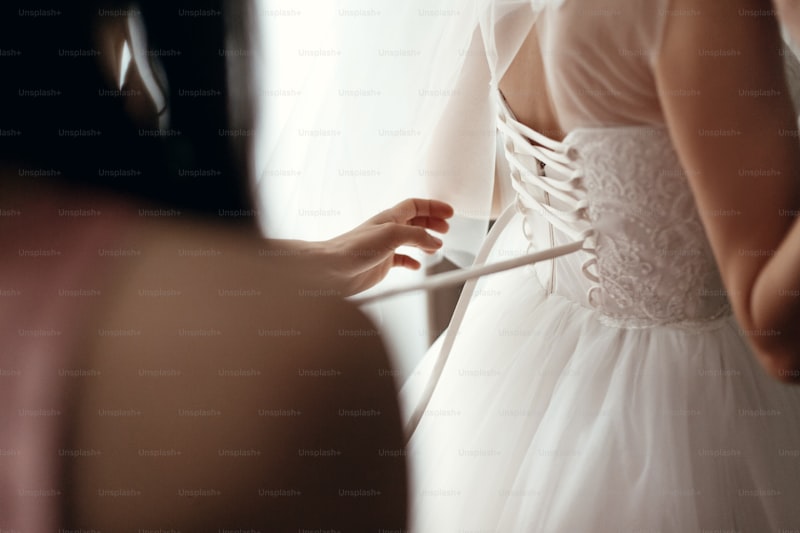Essential Dress Fitting Checklist: Perfecting Your Bridal Look
Why a Dress Fitting Checklist is Essential
Planning your dream wedding is an exciting journey, filled with joy and anticipation. One crucial aspect of this process is ensuring you look impeccable on your special day, and that's where a dress fitting checklist comes into play. This guide will walk you through everything you need to know, from the importance of fittings to essential tips and tricks for achieving the perfect fit!
Understanding the Importance of Dress Fittings
Dress fittings are not merely appointments to try on your gown. They are vital steps that ensure your dress complements your body shape and style. Fittings help in:
- Customizing the Fit: Each person has a unique body shape. A dress fitting allows tailors to make precise adjustments that cater to your specific measurements.
- Evaluating the Style: You can see how different designs, lengths, and silhouettes flatter your figure.
- Ensuring Comfort: A well-fitted dress not only looks good but feels good. Comfort is key to enjoying your day to the fullest.
What is a Dress Fitting Checklist?
A dress fitting checklist is a comprehensive guide that ensures you cover all necessary aspects before, during, and after your fitting. It serves as a reminder of what to bring, what to do, and how to communicate effectively with your tailor or dressmaker.
Your Ultimate Dress Fitting Checklist
Here’s a detailed checklist that will help you prepare for your dress fitting:
| Checklist Item | Description |
| 1. Bring the Right Undergarments | Wear the type of underwear and shapewear you plan to use on your wedding day. This can significantly affect the dress's fit. |
| 2. Shoes | Bring the shoes you intend to wear. The heel height can impact the length of your dress. |
| 3. Accessories | If you have your veil, jewelry, or any other accessories, bring them along. They help in visualizing the complete look. |
| 4. Image Inspirations | Prepare pictures that illustrate the style and fit you desire to convey to your tailor. |
| 5. Note Your Concerns | Write down any specific areas you feel unsure about so you can discuss them during your fitting. |
| 6. Schedule Follow-Up Appointments | Set aside time for additional fittings if necessary, particularly if your body may change (e.g., weight loss). |
| 7. Bring Family or Friends | Consider bringing someone whose opinion you trust to provide valuable feedback. |
| 8. Budget for Alterations | Know the estimated costs involved in alterations. Discuss this upfront with your tailor. |
| 9. Time Management | Plan your fitting well ahead of the wedding date to allow time for alterations. |
| 10. Stay Open-Minded | Your tailor may suggest fits and styles you hadn’t considered. Be open to their expertise. |
Preparing for Your Dress Fitting
Preparation can significantly contribute to a successful dress fitting experience. Here are further tips to ensure everything goes smoothly:
- Stay Hydrated: Drink plenty of water in the days leading up to your fitting. Keeping hydrated can help your body function optimally.
- Schedule Wisely: Try to avoid the days leading up to your menstrual cycle, as bloating can affect fit.
- Wear Minimal Makeup: Consider minimizing facial makeup to avoid transferring product to your gown.
- Communicate Clearly: Don’t hesitate to voice your concerns or desires to your tailor. Communication is key to achieving your vision.
Common Questions Regarding Dress Fittings
Brides-to-be often have many questions concerning dress fittings. Here are some of the most common inquiries:
1. How many fittings do I need?
Typically, brides require three fittings: the first, to get a basic fit; the second, to see most alterations; and the final fitting, closer to the wedding, to ensure everything works perfectly.
2. What if I change sizes?
If you anticipate weight changes, communicate this with your tailor. They expect these situations and provide guidance on how to manage a fluctuating body shape.
3. How early should I schedule my dress-fitting appointments?
Ideally, you should begin your fittings around two to three months before your wedding date to ensure ample time for adjustments.
4. What kind of alterations can be made?
Common alterations include adjusting length, taking in sides, adding or removing layers, and adjusting the bust area. Each dress is unique, so discuss these options with your tailor.
5. Can I customize my dress?
Absolutely! Tailors can add embellishments, change the neckline, or make other personalizations based on your preferences.

Final Thoughts
In conclusion, a dress fitting checklist is your best ally for achieving the perfect gown for your wedding day. From ensuring you have the right undergarments to being open-minded and communicative with your tailor, each aspect plays a critical role in the fitting process. Remember to schedule your fittings well in advance, stay relaxed, and enjoy the journey as you prepare for your magical day. Happy wedding planning!